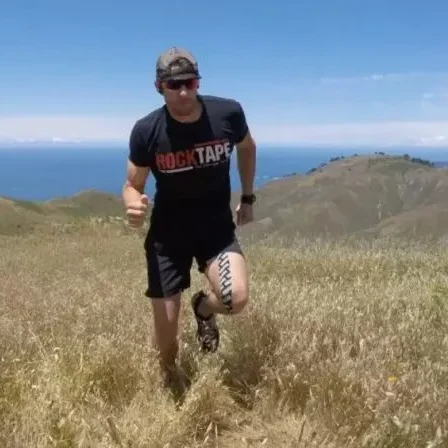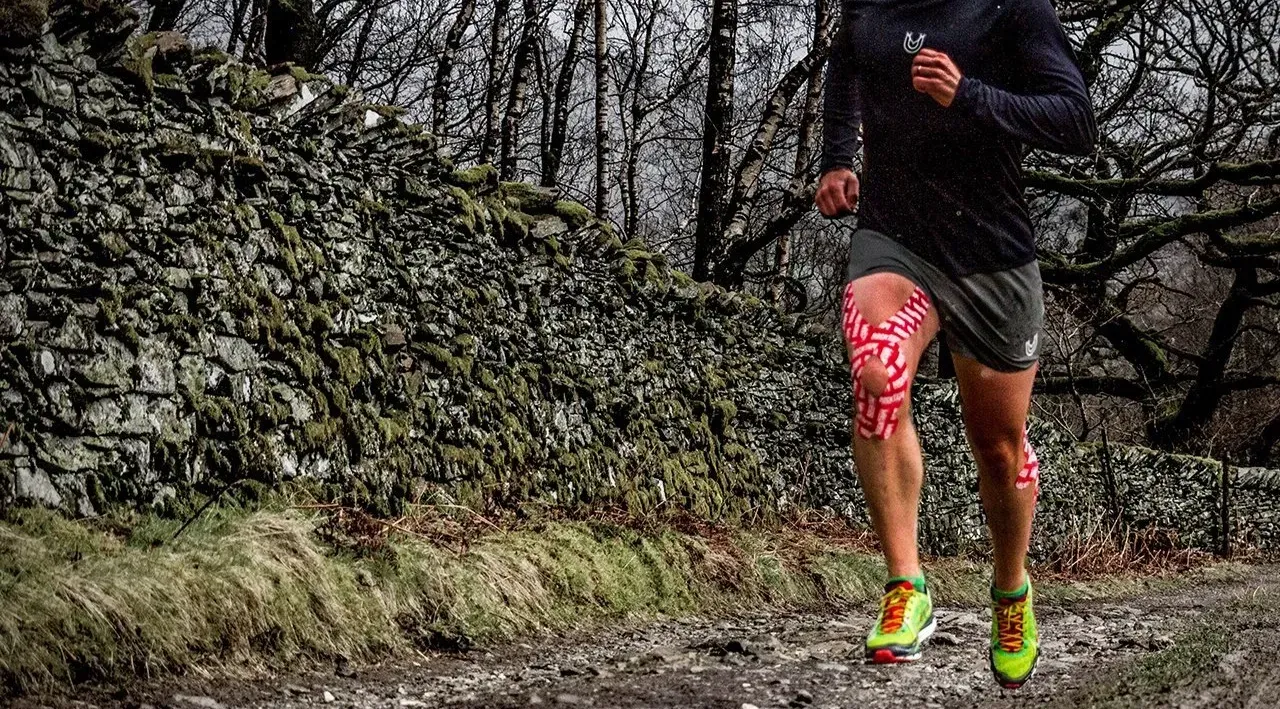Kinesiology Taping for Pain Relief
Kinesiology for Pain and Increased Movement
Kinesiology tape is used for therapeutic purposes in sports medicine and physical therapy. It provides support and stability to muscles and joints, while allowing a full range of motion. The tape can help alleviate pain, reduce inflammation, improve circulation, and promote healing in various conditions such as muscle strains, ligament injuries, and joint dysfunctions.
Kinesiology tape, made by weaving a natural-hybrid fabric so it stretches in one direction and not the other. This creates a bio-mechanical lifting mechanism that is said to lift the skin away from the soft tissue underneath, which allows more blood to move into an injured area to accelerate healing and recovery.
What is RockTape?
RockTape is the brand of kinesiology tape that I use because the quality and “stickiness” is the best I have used and stays on for ages. RockTape kinesiology tape consists of cotton, nylon and uses no drugs.
A hypo-allergenic acrylic adhesive is used and the tape fabric contains no latex making it suitable for nearly all skin types.
When applied over a stretched muscle, RockTape lifts the skin, accelerating blood flow to increase the amount of oxygen available to the muscles, which reduces fatigue. RockTape also promotes lymph drainage to remove toxins produced by the body during hard efforts. These combined effects are powerful: they allow the athlete to go harder for longer periods of time. Unlike compressions garments, RockTape can be applied to very specific areas of the body that are sometimes hard to reach, such as shoulders, knees, and joints.
What is Kinesiotaping?
Kinesiology taping is a relatively new technique, which differs from using standard rigid tape. It can be stretched up to 180% of its original length before applying to the skin. The tape then provides a constant pull or shear force to the skin. Kinesiology tape can be worn for several days and remain intact as it is air permeable and water resistant.
Standard rigid tape can be restrictive while kinesiology taping can be therapeutically effective and useful following injury and rehabilitation. Dr. Kenzo Kase, founder of the kinesiology taping method, proposed the following mechanisms for the effects of kinesiology tape:
Altered muscle function by the tapes effects on weakened muscles,
Improved circulation of blood and lymph by eliminating tissue fluid or bleeding beneath the skin,
Decreased pain through neurological suppression, and
Repositioning of subluxed joints by relieving abnormal muscle tension, and helping to affect the function of fascia and muscle.
A fifth mechanism has been suggested by Murray, which is that kinesiology tape increases proprioception through increased stimulation to cutaneous mechanoreceptors. Murray and Husk (2001) examined the effect of kinesio taping on ankle proprioception.
They concluded that kinesio taping for a lateral ankle sprain improved proprioceptive abilities in non-weight bearing positions in the midrange of ankle motion where ligament mechanoreceptors were inactive.
Rocktape explained
Rocktape is a revolutionary new type of therapeutic kinesiology taping product designed to aid in the treatment and healing of various sports injuries, as well as improve physical performance.
Common Problems that can be addressed using Rocktape Kinesiology Taping include issues such as
- Ankle Sprains,
- Achilles Tendonitis,
- Golfers Elbow,
- Shin Splints,
- Low Back Disorders,
- Rotator Cuff Problems,
- Plantar Fasciitis,
- Swollen Ankles,
- Tennis Elbow,
- Calf Strains,
- Carpal Tunnel Syndrome, just to name a few.
Rocktape is sometimes called duct tape of the human body because it is so versatile. It can be used to compress or decompress an area, depending on it’s application. It can be used to promote blood flow, or it be used to help drain swelling. It can be used to decrease pain, but can also be used to increase your awareness of a specific area that needs attention. Depending on its application, it can also be used to activate or deactivate a muscle group to enhance performance or decrease risk of injury.
Because of its versatility and unique design (in comparison to other kinesiology tapes), Rocktape is used for a wide variety of applications. Rocktape was built with the athlete in mind. Rocktape not only works wonders for injuries but also assists in coordination and movement. For instance, when athletes start to fatigue, they break form. Once form is less than optimal, so is performance, because form and function are interconnected and co-dependent.
We tape athletes for their injuries based on movement standards, orthopedic testing, and physical exam findings. However, what is a unique aspect to the training behind Rocktape is the use of PowerTaping protocol, which helps athletes extract every ounce of energy from their bodies and use it as efficiently as possible. How? By taping the body as a functional unit, emphasizing an entire chain of muscles according to how they work together to achieve the win.

What Does ROCKTAPE (Kinesiology Tape) do?
It turns down the volume on pain.
More specifically, it confuses the brain’s interpretation of neural signals. You know how rubbing a painful area makes it feel easier?
This is because the brain and nervous system concentrate on the rubbing and ignore the pain. Rocktape on the skin can interfere with painful signals in the same way. When the signals arriving at the brain are altered, it does not produce the sensation of pain.
When kinesiology tape is properly applied, many of my patients think it’s “magic” or think that it fixed their injury instantly. In fact, it helps to change how your body interprets pain, turning down the pain “volume” that your body hears. Rocktape does so by affecting the nerve endings and different types of receptors in the skin of the injured area.
It decompresses an area of swelling and inflammation.
When Rocktape is applied to the skin, it has a microscopic lifting effect underneath the skin and between the many layers. This allows for greater blood flow to and from the area, all while allowing the by-products created by inflammation to be removed more quickly.
It does so by allowing congested or compressed blood vessels (capillaries, lymph vessels, arteries, veins) to flow more freely. It also creates more room in between layers of fascia, muscle, fat, skin, and other structures.
It delays fatigue.
Research has shown that kinesiology tape (Rocktape) on the skin can attenuate muscle fatigue. In rehab, this is very important, not only for the parts of your body that are currently hurting but also for the surrounding areas as they help to pick up the slack for areas that are currently not working very well.
It normalizes muscle tone.
When someone is injured, fatigued, sick, or inflamed, the symphony of muscle action that normally takes place with great accuracy often falls out of tune. This can happen all over the body.
For instance, research has shown that people who sprain their ankle tend to have altered activity of their hip muscle as a result. What Rocktape can do is help to bring dormant muscle back to life and help calm down the overactive muscles. It helps your body coordinate movement as if it weren’t hurt, hence allowing it to heal properly.
It spreads the physical stress.
Unlike conventional taping which is meant to prevent any movement at all, Rocktape is meant to allow full movement of the taped area.
However, through the elastic properties and quick recoil, it can help to distribute forces to other nearby areas through the fascia, ligaments, and even bones.
references
- Halseth T, McChesney JW, Debeliso M, Vaughn R, Lien J. The effects of kinesio™ taping on proprioception at the ankle. J Sports Sci Med. 2004 Mar 1;3(1):1-7. PMID: 24497814; PMCID: PMC3896108.
Kinesiology Taping and Running

5 Rules for Rocktaping
